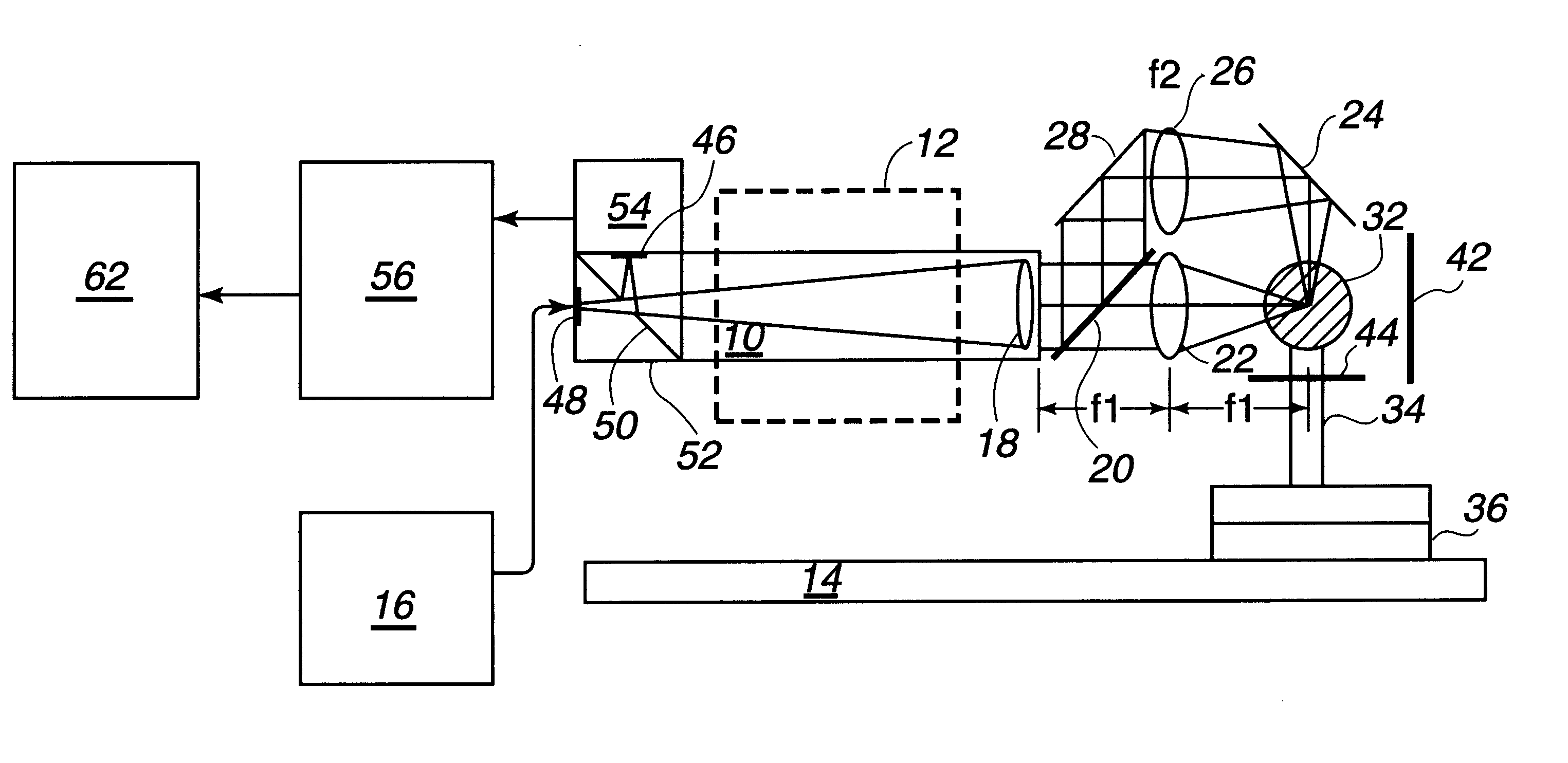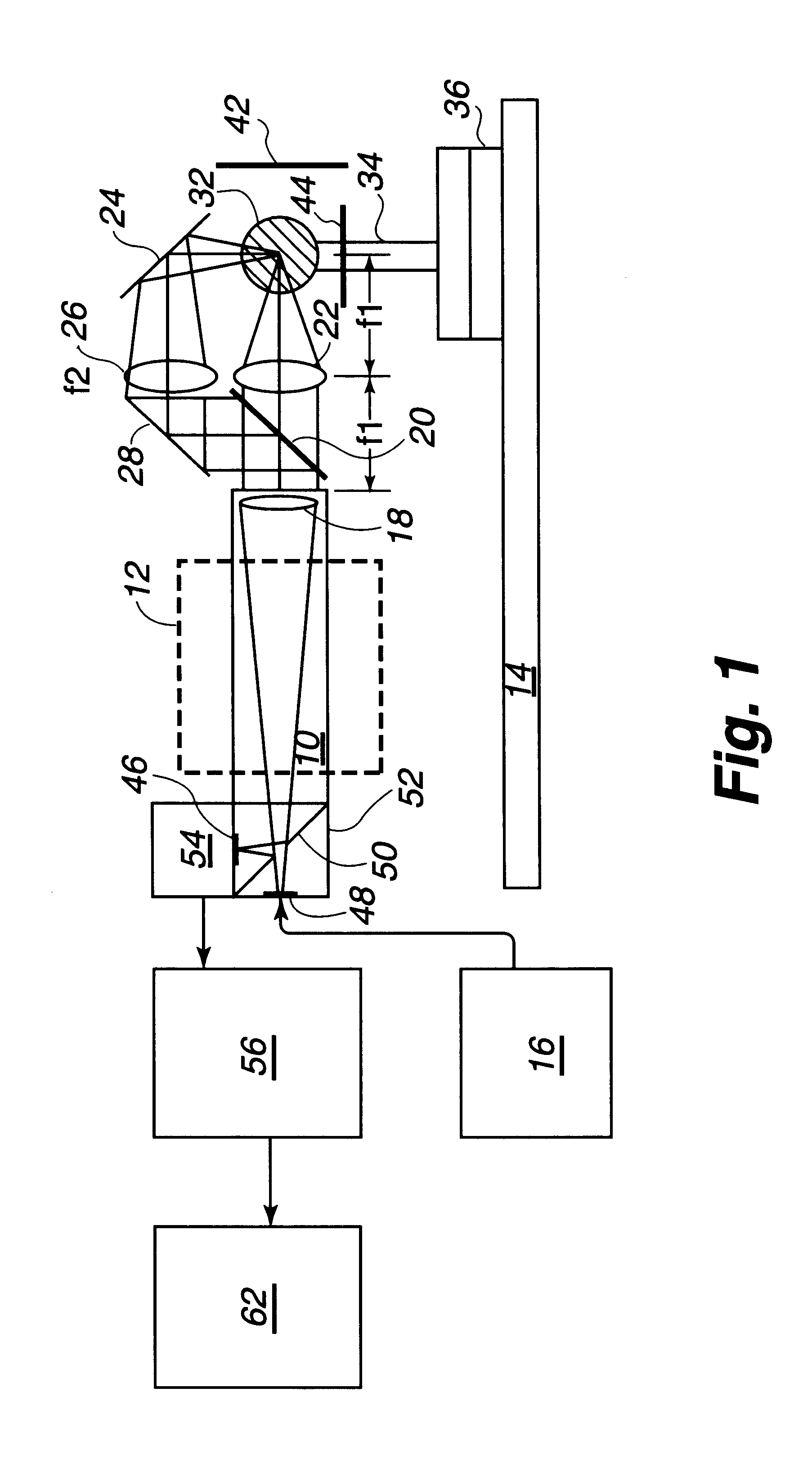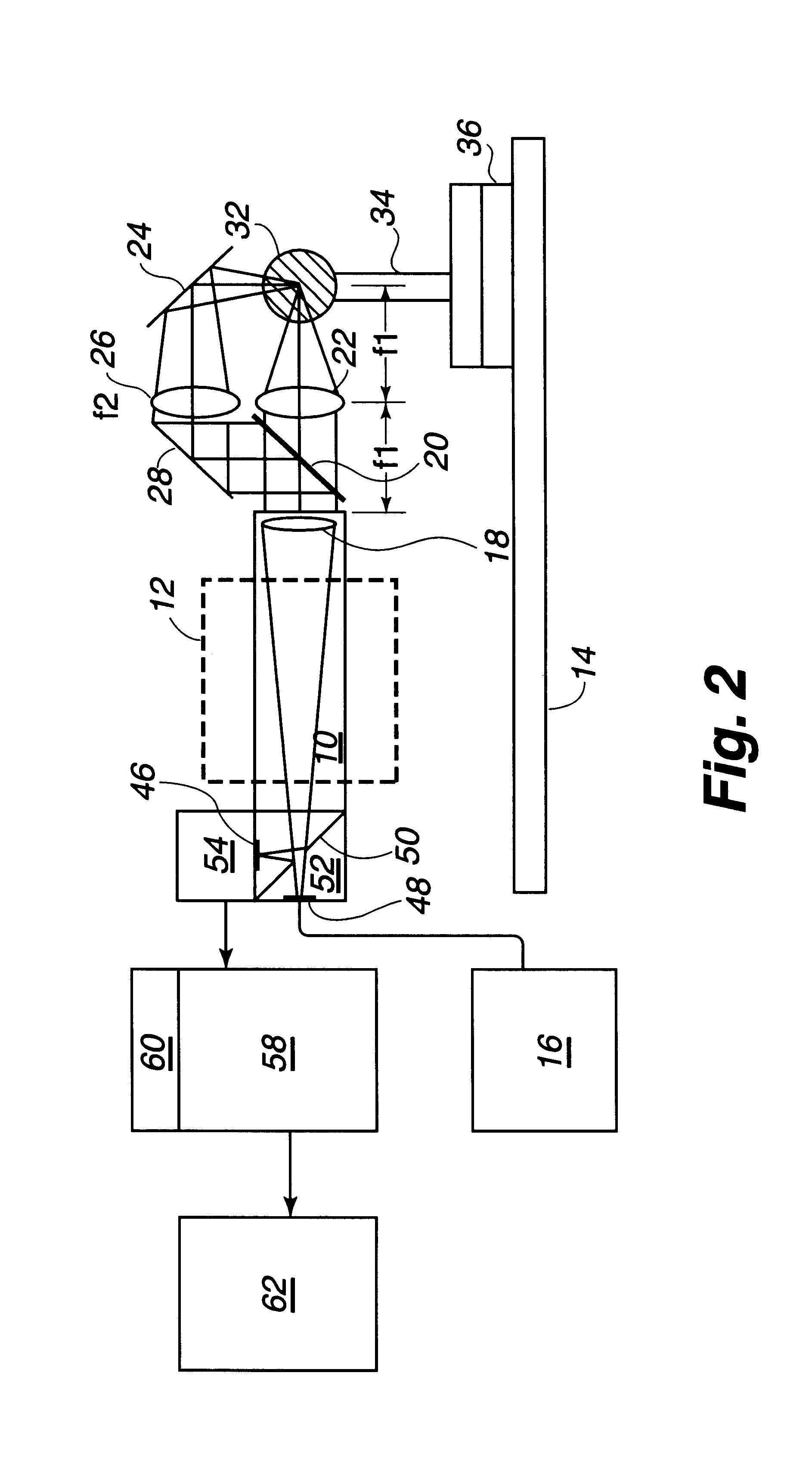Machine tool locator
a technology of tool locator and tool body, which is applied in the direction of manufacturing tools, instruments, metal-working machine components, etc., can solve the problems of stiction, dirt and wear, and the inability of touch probe systems to provide useful visual feedback, and achieve accurate measurement and positioning. , the effect of small tolerances
- Summary
- Abstract
- Description
- Claims
- Application Information
AI Technical Summary
Benefits of technology
Problems solved by technology
Method used
Image
Examples
example i
An algorithm for calculating the sensitivity of the invention apparatus was determined. When the invention apparatus is set up as shown in FIG. 1, if the reference tooling ball is moved by distance .epsilon..sub.1, the image of the autocollimated return on the CCD camera moves by .epsilon..sub.2 =(f.sub.ccd divided by f.sub.ball) (M.alpha.) 2.epsilon..sub.c, where f.sub.ccd is the focal length of the lens on the CCD side and f.sub.ball is the focal length of the lens on the ball side; M.alpha. is the angular magnification of the autocollimator. The quantity 2(f.sub.ccd divided by f.sub.ball) (M.alpha.) is the effective magnification and will typically be in the range from about 5 to about 20, depending upon design choices. If a nominal value for the overall magnification of 10 is taken, a 40 microinch error in ball positioning causes a 400 microinch displacement on the CCD. With electronic magnification (CCD to display monitor, which is typically 20 to 50) several microns of ball di...
example ii
For a laboratory measurement of the sensitivity of the invention apparatus, equipment was set up essentially in the manner shown in FIG. 1. The sensitivity for positioning a reference tooling ball on the straight through axis was tested by changing the relative position of the alignment telescope and the tooling ball with micrometers. A 10-inch monitor was used.
For the straight through path, i.e., the axis used to set tool height, and using a 60 mm lens, the autocollimated return moved 5 divisions when the micrometer was adjusted by 0.0035 inches. The sensitivity for this axis is therefore 0.0007 inches / division. With this sensitivity, it is quite easy to repeat alignment settings on the tooling ball to .+-.0.000010 inches.
This magnification seemed to be about the right trade off between field of view and mechanical adjustment, although a little more magnification would be preferred if there were room enough between the optical locator device and the machine tool.
example iii
The sensitivity for positioning a reference tooling ball on the long axis was tested by changing the relative position of the alignment telescope and the tooling ball with micrometers. A 120 mm lens was put into a translation mount that was used for alignment. The translation mount was put in the long leg of the upper path to keep the head compact for the best mechanical stability.
The sensitivity measured for this axis was 0.0053 inches / 5 divisions or 0.001 inch / division. The ratio of the magnifications (10 / 7) was not quite the same as the ratio of the lens focal length (10 / 6). This was most likely because the alignment telescope focus was not exactly set for infinity, but rather adjusted to get both axes into the best focus as the same time. Even though the sensitivity for this axis was less than that for the straight through axis in Example II, it was possible to repeat alignments to the tooling ball to .+-.0.000020 inches.
PUM
 Login to View More
Login to View More Abstract
Description
Claims
Application Information
 Login to View More
Login to View More - R&D
- Intellectual Property
- Life Sciences
- Materials
- Tech Scout
- Unparalleled Data Quality
- Higher Quality Content
- 60% Fewer Hallucinations
Browse by: Latest US Patents, China's latest patents, Technical Efficacy Thesaurus, Application Domain, Technology Topic, Popular Technical Reports.
© 2025 PatSnap. All rights reserved.Legal|Privacy policy|Modern Slavery Act Transparency Statement|Sitemap|About US| Contact US: help@patsnap.com



